Special night of music and film in New York with Industries of the Blind
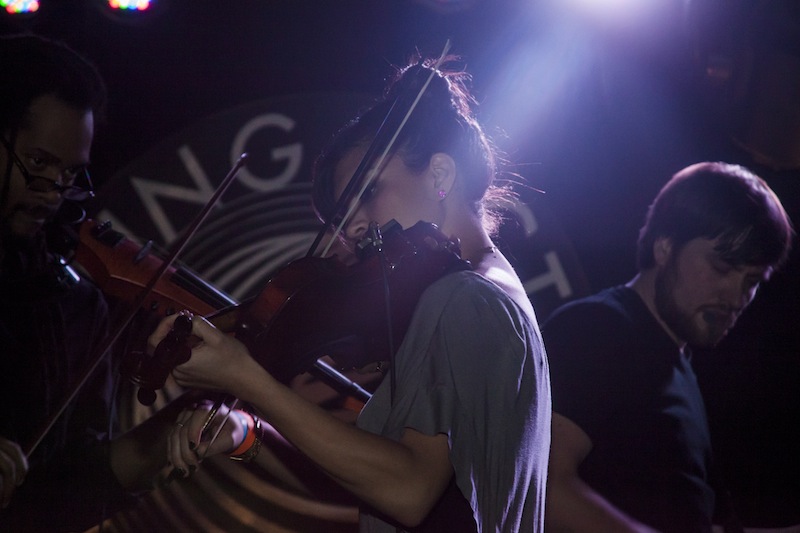
The nine members of Brooklyn’s prodigious post-rock ensemble Industries of the Blind took the Knitting Factory’s lofty stage on the eve of the Mayan calendar’s end, 21st December.
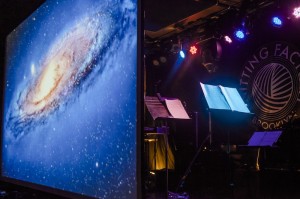 Shortly after tuning their instruments, they began the first part of their two-act set with no introduction or opening act. This immediately sent a message of duty; that they were here to play, holding little regard for trifling formalities. The audience abruptly ceased all chatter in response, adeptly following the band’s lead. IotB’s first act was a world premier of their newest material, Chapter 2.
Shortly after tuning their instruments, they began the first part of their two-act set with no introduction or opening act. This immediately sent a message of duty; that they were here to play, holding little regard for trifling formalities. The audience abruptly ceased all chatter in response, adeptly following the band’s lead. IotB’s first act was a world premier of their newest material, Chapter 2.
At first, they placed emphasis on buildup and emphasis on the string trio. The easy glides of the violinists behind the violist’s lead were as smooth as the light itself. Chapter 2 took a direction similar to its predecessor, but with a matured sense of chemistry between the strings and composer Sammy Gallo on the lead guitar, keys steadily rocking beside.
However, the sudden drums strong-arming their way with no apology showed the band were not afraid to take risks and accelerate their energy exponentially. The interconnection from song to song proved to be a strong repository of the emotional spikes and grooves established in each previous piece.
The set ended with debut EP Chapter 1’s jubilant closer, The Lights Were Bright, But Our Eyes Were So Tired. Some sections seemed to be tightened for a much more concise, condensed cut, with some additional tweaks to spice up the continuous guitar riffs. Act 1 was a stellar showcase, and certainly warranted the intermission.
Act 2 was quite an original experience, a screening of four short films with their musical scores played entirely by IotB behind the screen. Sammy Gallo took the role of conductor, guiding the band through the seemingly formidable task of playing a combined hour of film-synchronized music.
Lisa Kletjian’s How to Prepare for Survival was effectively haunting, a narrative of nonverbal subtleties with Nuclear Survival Manual footnotes interspersed. What progressed was a series of post-apocalyptic shots, from dilapidated buildings, faded walls in empty rooms, hanging debris, and eerily peaceful undershots of still tree branches.
The camera shots seem to intentionally display the subtle shaking of being held still by human hands in contrast to the absence of any characters or signs of human life. The “scene” of the carousel and close-ups of each horse in addition to the dark noise emanating from IotB produced an especially ominous atmosphere.
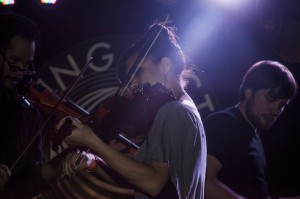 Raymond Kwong by Salazar, though lacking exposition, seems to be a short display of a swimmer’s pride as he maneuvered artfully underwater. After some research, this was meant to be a portrait of the first Chinese lifeguard in Vancouver. At this point, a portion of the crowd began to sit on the floor like kindergarteners, taking comfort in the intimate atmosphere and simply absorbing all that took place on stage.
Raymond Kwong by Salazar, though lacking exposition, seems to be a short display of a swimmer’s pride as he maneuvered artfully underwater. After some research, this was meant to be a portrait of the first Chinese lifeguard in Vancouver. At this point, a portion of the crowd began to sit on the floor like kindergarteners, taking comfort in the intimate atmosphere and simply absorbing all that took place on stage.
As far as synchronizing music to the films’ most potent emotional turns, Manitoba by Salazar provided several highlights. This was again a film of very few words, if any, but provided a clear depiction of bullied children seeking an emotional sanctuary. The music pitch rose and fell with the children’s spirits, and braced the audience for the cruel ending when one of the kids, clad in face paint and motley attire, gets captured and taken away by the menacing teenagers.
Perhaps the main attraction of Act 2 was Court 13’s award-winning Glory at Sea. This particular screening alone could warrant such a strong turnout, never mind the solidifying musical reinforcement of IotB’s live mix of the score. Glory at Sea is a fantastical imagining of a desolate post-Katrina environment, applying elements of Greek myth and Christian themes to really open the audience to a transcendence of the tragic and mundane.
Behind the screen, IotB truly came alive with perfect pacing; from the appearance of the man washed ashore to the storm-stricken community coming together to visit their lost loved ones undersea. The visuals are incredibly vibrant, especially the symbolic construction of the boat and the young narrator submerged underwater.
As the credits began to roll and the film screen rolled back to the ceiling, the band were unveiled in all their glory while they played their last crescendo. They were made sure how thankful the audience was by way of exuberant applause and cheers of “Sammy!”.
Other members, such as Jamaal the violist and Liz, backing violinist, couldn’t help but break smiles at the immensity of energy and gratitude exhibited by such an uproar.
Ingamar Ramirez
Photos: Adhat Campos
For further information on Industries of the Blind and the aforementioned films, visit here.



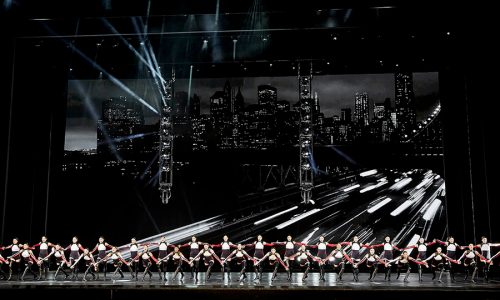

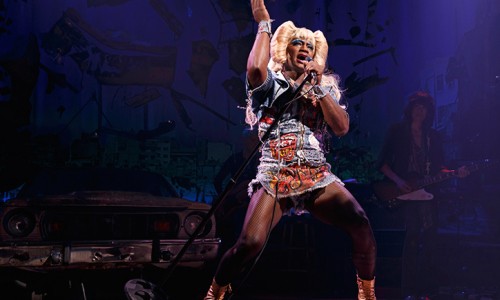
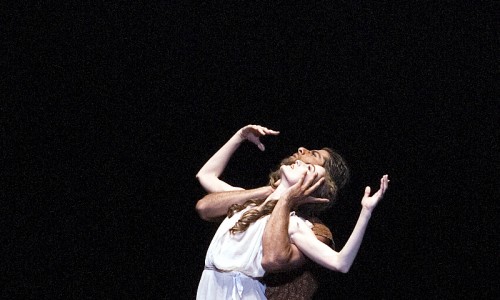
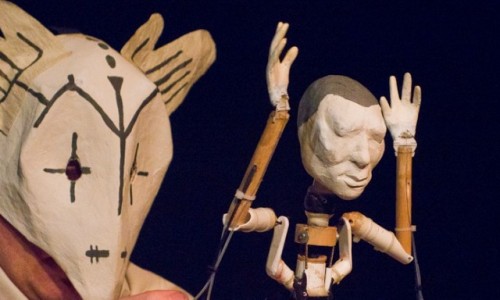

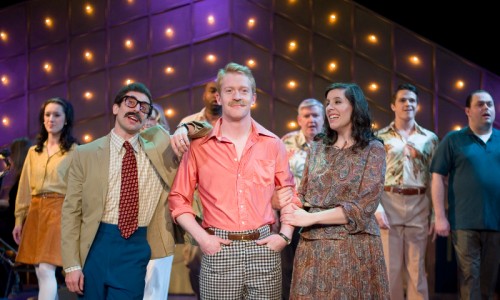














Facebook
Twitter
Instagram
YouTube
RSS